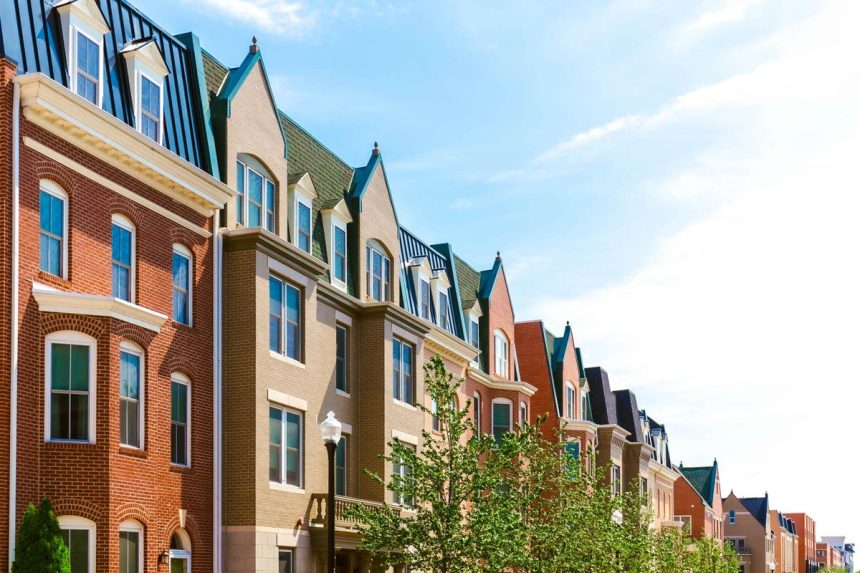Cofounder and Managing Partner of Disrupt Equity. Learn more about our multifamily investment opportunities by visiting our website.
Multifamily real estate investing offers many diverse strategies. Some investors prefer long-term approaches, holding properties for extended periods to benefit from stable cash flow and property appreciation. Others choose quick renovations and flipping to avoid market downturns.
Another option involves value-add multifamily properties, which combines holding and renovations to strike a balance and yield exceptional returns. Let’s explore this opportunity.
Identifying A Value-Add Property
The initial step is to locate a multifamily property with value enhancement potential. When looking for a complex, consider these questions:
1. Are the rental rates for this property lower than similar properties? Is there an opportunity for unit upgrades to match comparable standards?
2. Are there ongoing upgrades to the units? How does the rental income for upgraded units compare to non-upgraded ones?
3. Can operational efficiencies be improved for on-site property management performance?
4. Are vendor expenses excessively high compared to the market? Are there areas for cost reduction?
5. Would security measures like patrols, gates and cameras enhance resident safety and peace of mind?
6. Would rebranding boost online reputation and attract new tenants?
7. Can you align the property with comparable high-performing properties by considering options such as fresh paint, new furniture, improved landscaping or fenced-in patios for ground-floor tenants?
8. Is there space to add value with features like a dog park, gym, package lockers or upgraded office space on the property?
Understanding The Risks
Investing in value-add real estate can come with certain risks that investors should be aware of. Unforeseen economic downturns can drastically change market conditions, making it difficult to maintain the expected return on an investment and reducing its value.
Over-leveraging is another potential risk, as investors may need to borrow more money than usual when pursuing a value-add strategy. This could lead to increased risk if not managed properly.
Lastly, there are risks posed by tenants, such as tenant default or failure to pay rent, that could make it harder for value-add investors to recoup their initial costs or make a return on their investment.
Acquiring The Property
There are a few ways investors can acquire a property. One option is through syndicators. (Disclosure: My company offers syndication opportunities.) Syndicators bring investors together and conduct thorough due diligence to ensure alignment with their value-add investment strategy and investor goals. Upon raising the required capital, sponsors focus on finalizing and closing the deal.
Apart from syndication, investors can buy traditional apartment buildings through real estate agents or directly from owners. Creative financing techniques like seller financing, house hacking and lease options can also be used.
To determine the best route for acquiring a property, investors should consider their financial resources, experience level and time constraints. Think about your risk tolerance, whether you qualify for financing, how you’ll secure funding, the closing process and potential tax implications.
Enhancing The Value
Next is the crucial step where you enhance the value of the property. Value addition in multifamily properties typically involves improvements like renovations, enhancing landscaping, adding a dog park, modernizing the pool, remodeling units, improving security and developing enticing amenities to attract tenants and capital.
Priority is usually given to empty or underused units for interior renovations. As leases expire, tenants can be moved to upgraded units, freeing up older units for renovation.
The timeline for value enhancement varies, but I’ve found it typically takes around a year to a year and a half. Some projects may take longer, especially if all interior units need renovations and you have to wait for multiple tenants’ leases to expire (which can span years)!
How Multifamily Properties Are Valued
Next, investors may want to consider refinancing. Why? After completing repairs and upgrades, it might be tempting to cash out or enjoy the increased rental income. The key lies in valuation.
Valuing a multifamily property differs from a single-family home. While comparable sales determine the appraisal for a single-family home, the value of a multifamily dwelling is based on its income generation. For example, a multifamily complex generating $1 million in rent annually holds more value than one generating $50,000, assuming they are in the same submarket.
When refinancing, a supplemental loan is often secured on top of the original loan. Additional funds from this loan are disbursed directly to the investors, serving as an early disbursement.
Here’s how value-add multifamily real estate works: Let’s say you invest $50,000 and are able to boost the building value by 50% within a year. An income potential assessment unlocks value appreciation for investors, delivering potential capital returns.
After a year, you could recoup 50% of your initial investment ($25,000) and reinvest it in another opportunity. The annual investment returns of $5,000 remain unchanged. Rather than making $5,000 with $50,000 invested, you would earn $5,000 with $25,000 invested. And you would still receive your initial investment back and additional appreciation when the property sells.
Not all value-add deals guarantee this level of success. Sometimes, holding onto the investment is the best action. A strong market may enable an early exit, helping the sponsor find a great buyer. The outcome ultimately depends on various factors.
Holding Period And Exit
Once all necessary improvements are completed, and if applicable, the property is refinanced, the investor will continue to hold on to it until an opportune moment arises to exit. Throughout this holding period, investors will receive cash-on-cash returns and witness the property’s economic appreciation.
The duration of ownership varies based on market conditions and the asset’s business plan. While the standard time frame for most real estate syndications is three to seven years, it’s important to note that this duration is flexible. Some deals may extend longer, while others may be shorter.
You might ask, “Why sell when I earn a significant passive income from this real estate syndication?” Maximizing value and rental rates in a multifamily property generates passive income. Once that’s achieved, many consider redeploying capital into another value-add real estate venture. By repeating this approach, investors can enhance their portfolios.
Investing is never a guarantee, but a value-add multifamily strategy can offer a promising path to success—a strategic and calculated investment method for your hard-earned capital.
The information provided here is not investment, tax, or financial advice. You should consult with a licensed professional for advice concerning your specific situation.
Forbes Business Council is the foremost growth and networking organization for business owners and leaders. Do I qualify?
Read the full article here










